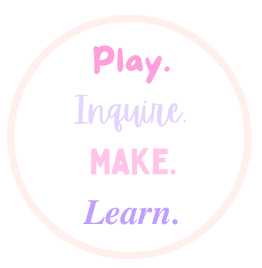What is a STEM kit?
STEM kits have projects to create using concepts from science, math, technology, and engineering . These subjects together encourage critical thinking, problem solving, and creativity.
These kits that I chose come with five different engineering projects each. This is perfect to set aside one per week. I used the booklet as a guide to choose the order of completion. Creating a weekly homeschool engineering program is as simple as that! You can make it more or less depending on your child’s age. You can find books to read each week, videos to watch, visiting a museum, and so on. But I wanted to keep it simple as we are starting off, and I personally have no background in engineering or technology.
What STEM kit do you recommend?
There are so many STEM kits available from many retailers. For this “mini curriculum” that I am creating, I wanted to get some mini projects to work on that had motors and wiring so I bought these STEM kits on Amazon to try. I bought this one to try first from Poraxy as it had a few cool projects like a conveyor belt, tank, and airplane car. I also purchased this one from Poraxy and after we are done with the first one, we will move onto this one. I also bought a few extra motors, battery holders, and propellers, just for when the kids are done with these kits, they can continue to build other projects as well. (You can even take these projects apart and rebuild again!)
For right now, our goal is to have a lot of hands-on learning and through real life exploration, we will have questions and then look for the answers in books and videos. I do have a book that I purchased that I will make a post separately about- but this book will ultimately serves as our spine for learning about electronics. Read more below.
The kids built the first project, a crawler tank, and it wasn’t that difficult to be honest. I think the most challenging part was tightening in the screws since they are tiny but the kids played around and learned different techniques to get them in. They were able to build this project with minimal help from me. The kit says for ages 8 and up and my kids are almost 8 and 10 years old so it is an accurate age range.

The directions are good but could be more clearer of course, but we figured it out in the end anyways. And that’s part of engineering. If it doesn’t work out, troubleshoot until it does, right?!
When the kids were done building their tank, they raced and made obstacles. They piled books in a wavy road fashion so the tank could crawl over them; they used a sheet and made it as flat as possible on the stairs to create a slide. This caused the tank to slide and then slightly crawl, slide, slightly crawl, and so on, all the way down the stairs. So essentially, they were testing out the functionality of this tank and I can only imagine what their little brains were thinking up to do after!
They are so excited to make the other cool projects- an airplane craft, ferris wheel, doodle bot, and a conveyor belt. (I am actually most excited for the conveyor belt, it looks so cool!)
I would highly recommend kits like these to encourage engineering in your homeschool or classroom education. The kids are learning creativity, problem-solving, building with various materials, patience, resilience and so much more just by doing one project a week.
What if I don’t have an engineering background?
It may seem intimidating to start projects like these when you have zero background in STEM fields, but I promise you, it’s worth it. Especially when your kids have an engineering mindset already. I learn along with them, but truly my goal is to teach them what I can, and if they have questions, guiding them to find the answer is key.
Engineering Book Recommendations
We purchased a few books years ago from Usborne that talked about Engineering and How things work. I like leaving these books around the couch, open to no particular page, just for the kids to sit down and look at when they can (this is called strewing). This kind of piques their interest and gets them to read for a little bit unexpectedly. I also like this book from DK How to be an Engineer as it talks about a few people and what they engineered as well as engineering projects to complete. Some other fun children books to read are Ada Twist the Scientist, Iggy Peck the Architect, and Rosie Revere, Engineer.
One of the books I purchased to help guide our homeschool curriculum when we begin electrical engineering is called Electronics For Kids By oYvind Nydal Dahl. It covers a lot of different projects and teaches about electricity, magnetism, LEDs, resistors, and more. This is going to serve as our spine for learning about electronics and I will definitely be highlighting our creations and how I use this book as part of our homeschooling education.
Latest Posts
*Adult Supervision Is Required For All Activities*








